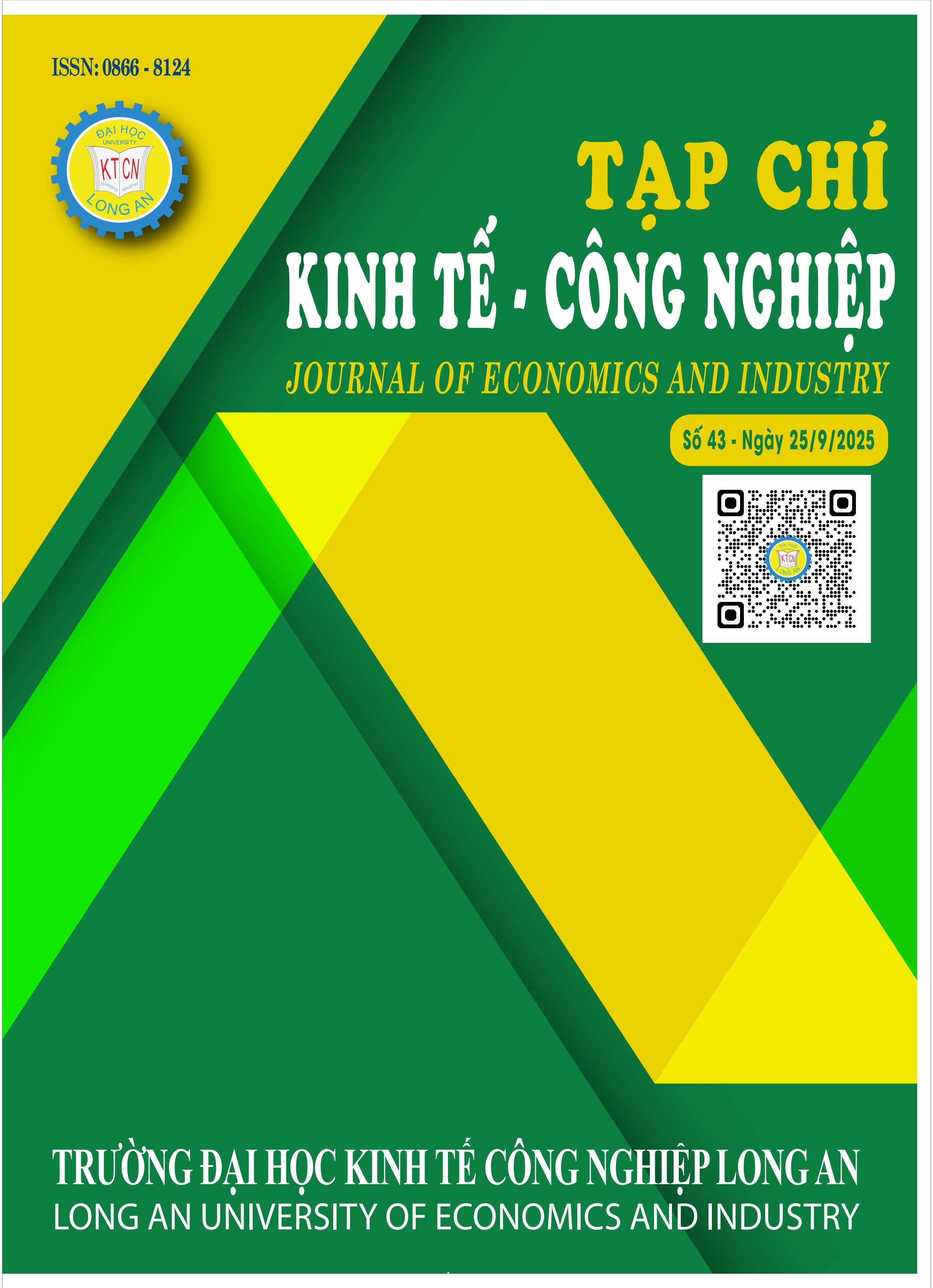Tác động đa dạng hóa thu nhập đến suất sinh lời tài sản các NHTM Việt Nam
DOI:
https://doi.org/10.63783/dla.2025.049Từ khóa:
Đa dạng hóa thu nhập (income diversification), suất sinh lời tài sản (Return on Assets), ngân hàng thương mại (commercial banks), Việt Nam (Vietnam)Tóm tắt
Tóm tắt — Nghiên cứu đánh giá tác động của đa dạng hóa thu nhập đến suất sinh lời tài sản (ROA) của các ngân hàng thương mại Việt Nam giai đoạn 2013 - 2023. Với 286 quan sát, dữ liệu bảng được phân tích bằng OLS, FEM, REM và sử dụng FGLS xử lý hiện tượng phương sai thay đổi và tự tương quan. Kết quả cho thấy mức độ đa dạng hóa thu nhập (FOCUS), thu nhập ngoài lãi (NII), tỷ lệ huy động vốn (CA) và sở hữu nhà nước (STATE) đều có tác động âm và có ý nghĩa thống kê, trong khi quy mô ngân hàng (SIZE) ảnh hưởng tích cực đến ROA. Điều này cho thấy các ngân hàng lớn với nguồn lực mạnh tận dụng tốt chuyển đổi số để nâng cao hiệu quả tài chính. Ngược lại, sự phụ thuộc vào thu nhập ngoài lãi, sở hữu nhà nước hay yêu cầu vốn cao làm giảm lợi nhuận. Kết quả hàm ý rằng các ngân hàng cần cơ cấu lại nguồn thu, đầu tư vào chuyển đổi số và cải thiện quản trị để gia tăng hiệu quả bền vững.
Abstract — This study evaluates the impact of income diversification on the return on assets (ROA) of Vietnamese commercial banks during the period 2013 - 2023. Based on 286 observations, panel data were analyzed using OLS, FEM, REM, and FGLS to address heteroskedasticity and autocorrelation. The results indicate that income diversification (FOCUS), non-interest income (NII), capital adequacy ratio (CA), and state ownership (STATE) all have statistically significant negative effects on ROA, whereas bank size (SIZE) positively influences ROA. This suggests that larger banks with stronger resources are better positioned to leverage digital transformation to enhance financial efficiency. Conversely, reliance on non-interest income, high state ownership, or high capital requirements tends to reduce profitability. The findings imply that banks should restructure their income sources, invest in digital transformation, and improve governance practices to achieve sustainable efficiency gains.
Thống kê lượt tải xuống
Tài liệu tham khảo
Elsas, R., Hackethal, A., & Holzhauser, M., “The anatomy of bank diversification”, Journal of Banking & Finance, 34(6), 1274-1287, 2010.
Baele, L., De Jonghe, O., & Vander Vennet, R., “Does the stock market value bank diversification?”, Journal of Banking & Finance, 31(7), 1999-2023, 2007. DOI: 10.1016/j.jbankfin.2006.08.003
Stiroh, K.J., “Diversification in banking: Is noninterest income the answer?”, J. Money Credit Bank, 36(5), 853–882, 2004.
Stiroh, K. J., & Rumble, A., “The dark side of diversification: The case of US financial holding companies”, Journal of banking & finance, 30(8), 2131-2161, 2006. DOI: 10.1016/j.jbankfin.2005.04.030
Meslier, C., Tacneng, R., & Tarazi, A., “Is bank income diversification beneficial? Evidence from an emerging economy”, Journal of International Financial Markets, Institutions and Money, 31, 97-126, 2014. DOI: 10.1016/j.intfin.2014.03.007
Sanya, S., & Wolfe, S., “Can banks in emerging economies benefit from revenue diversification?”, Journal of financial services research, 40, 79-101, 2011.
Maudos, J., “Income structure, profitability and risk in the European banking sector: The impact of the crisis”, Research in International Business and Finance, 39, 85-101, 2017. DOI: 10.1016/j.ribaf.2016.07.034
Rose, P. S., & Hudgins, S. C., “Bank management and financial services”. McGraw-Hill companies, 2008.
Mercieca, S., Schaeck, K., Wolfe, S., “Small European banks: benefits from diversification?”, J. Bank. Finance 31, 1975–1998, 2007. DOI: 10.1016/j.jbankfin.2007.01.004
Chiorazzo, V., Milani, C., & Salvini, F., “Income diversification and bank performance: Evidence from Italian banks”, Journal of financial services research, 33(3),181-203, 2008.
Markowitz, H. M., “Portfolio theory: as I still see it”, Annu. Rev. Financ. Econ., 2(1), 1-23, 2010. DOI: 10.1146/annurev-financial-011110-134602
Goold, M., & Campbell, A., “Desperately seeking synergy”, Harvard business review, 76(5), 131-143, 1998.
Bapat, D., & Sagar, M., “Examining relationship of income diversification, asset quality with bank profitability: implication for indian banks”, Indore Management Journal, 8(1), 11-11, 2015.
Ahamed, M.M., “Asset quality, non-interest income, and bank profitability: Evidence from Indian banks”, Economic Modelling, 63, 1-14, 2017. DOI: 10.1016/j.econmod.2017.01.016
Sawada, M., “How does the stock market value bank diversification? Empirical evidence from Japanese banks”, Pacific-Basin Finance Journal, 25, 40-61, 2013. DOI: 10.1016/j.pacfin.2013.08.001
1016/j.pacfin.2013.08.001
Gujarati, D. N., & Porter, D., “Basic Econometrics (5th ed.)”. New York: McGraw-Hill Irwin, 2009.

